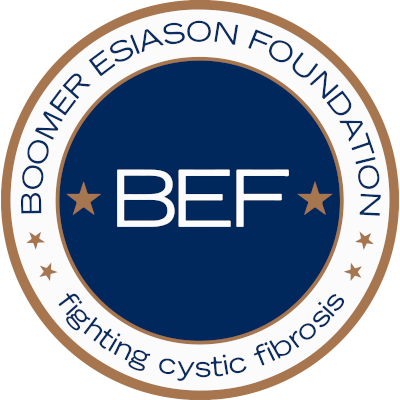© Copyright 2014 The San Diego Union-Tribune, LLC. An MLIM LLC Company. All rights reserved.
Westview sophomore Aaron Fox (right) has cystic fibrosis, but he’s able to keep the disease in check by undergoing 40 minutes of daily treatment and leading an active lifestyle that includes competition with the Wolverines volleyball team. — Bill Wechter
Masked, the adolescent patient peered at Aaron Fox, who was planted in the corner of the hospital’s physical therapy room.
He was leery. Aaron wore an identical mask.
“It wasn’t because he thought of me as an interesting, older, bigger kid who’s pretty cool or anything like that,” said Aaron, a Westview High sophomore.
“The look in his eye. It said don’t be around me. Don’t take off your mask. I don’t want to get sick.”
Aaron and the adolescent had been diagnosed with cystic fibrosis — an inherited disease that clogs the lungs and can damage the digestive system. Exchanging bacteria worsens the condition.
“That was the point that I realized that he probably has it much, much worse than I do,” Aaron said.
Days later, Aaron encountered another patient. This youngster was different.
“He could barely stand during a Wii game that we played,” Aaron said. “He had something so severe, but he gave affirmations, gave compliments to you and made you feel better about yourself. And he never once said this sucks, why me, I hate this or anything.
“If he could be positive, then I can be positive.”
Two experiences. Two reactions.
Those encounters two years ago inspired Aaron, 17, an outside hitter for the Westview volleyball team. Since then, he has become an advocate for research and a source of inspiration for others with cystic fibrosis.
Next week, Aaron will see his vision come to fruition as the Wolverines host Poway in a match devoted to community outreach. All proceeds will go to the Cystic Fibrosis Foundation.
“It’s not about him,” said Mary Fox, Aaron’s mother. “It’s about helping other CF patients who have a more severe condition than he does. It’s about raising awareness and hoping to make a difference in others’ lives.”
Westview coach Steve McLaughlin said the event is a reflection of the Wolverines program.
“(Aaron) is a phenomenal person in all respects,” McLaughlin said. “Our program is built for others. It’s not about looking out for yourself, but looking out for teams and others in the community, so this was a natural transition — doing something for a teammate, doing something for a better cause than just ourselves. That made it easier to champion.”
As Aaron was growing up, nothing seemed to curb the symptoms. He barked repeatedly between breaths, interrupting conversations. He hacked up mucus daily. For seven years the symptoms persisted as doctors incorrectly diagnosed his condition as allergy-induced asthma.
“Let’s try just one more,” Mary urged.
It was then that Aaron encountered a pulmonologist who ordered what’s called a sweat-chloride stimulation test.
“They placed electrodes on his arm. What I like to call an upside-down petri dish collects the sweat once the glands are stimulated,” Mary said. “Normal is 10 to 20, the doctor told us. Aaron’s test yielded 100.”
Days later, Aaron received a diagnosis of cystic fibrosis. But unlike most CF patients, he had no digestive issues. Nothing prevented his body’s enzymes from absorbing the nutrients provided by ingested food.
“It’s a genetic disease. The gene that has the problem encodes a protein called CFTR. There are at least 2,000 different ways that gene can be mutated to cause problems,” said Mark Pian, a pediatric pulmonologist who is Aaron’s primary doctor at Rady Children’s Hospital.
“The majority of CF patients have a handful of those mutations. Depending on how badly the function of CFTR is impaired by the mutation that the patient has, that’s going to determine how many and how severe the manifestations they have.”
The life expectancy for a CF patient with respiratory and digestive complications is usually about 40 years, but that shouldn’t apply to Aaron as long as he undergoes treatment and maintains physical activity.
Aaron devotes 40 minutes to treatment daily — 20 in the morning, 20 at night — to assure that his lung capacity doesn’t plummet.
During treatment he wears a specialized vest that inflates with air, compressing his torso while beating his chest periodically at various levels of strength.
“It’s basically breaking up that mucus and moving it,” Mary said.
The second part uses a nebulizer. It’s a machine that converts liquid into vapor. Aaron breathes in air through a tube inserted into his mouth that transports it directly to the lungs.
In addition to the treatment, Aaron takes Albuterol, which opens up the airwaves, and Pulmozyme, which thins out the mucus to either be absorbed or coughed up.
“I noticed before his diagnosis. He carried tissue around,” McLaughlin said. “That was before the season. After the diagnosis, after the treatments and precautions he took, Aaron appeared and played like a normal, healthy young man. There were no signs. I’ve also never had to monitor his sets or play time on the court, either.”
Aaron, who is 5-feet-11 and weighs 140 pounds, said the treatment has become like “brushing my teeth or taking vitamins.”
“That’s the way I view this,” he said. “It’s just another thing I have to do. I live a normal life except for waking up 20 minutes earlier and going to sleep 20 minutes later each day. I don’t have to think about the disease, which is a blessing. I’m extremely lucky.”
© Copyright 2014 The San Diego Union-Tribune, LLC. An MLIM LLC Company. All rights reserved.
